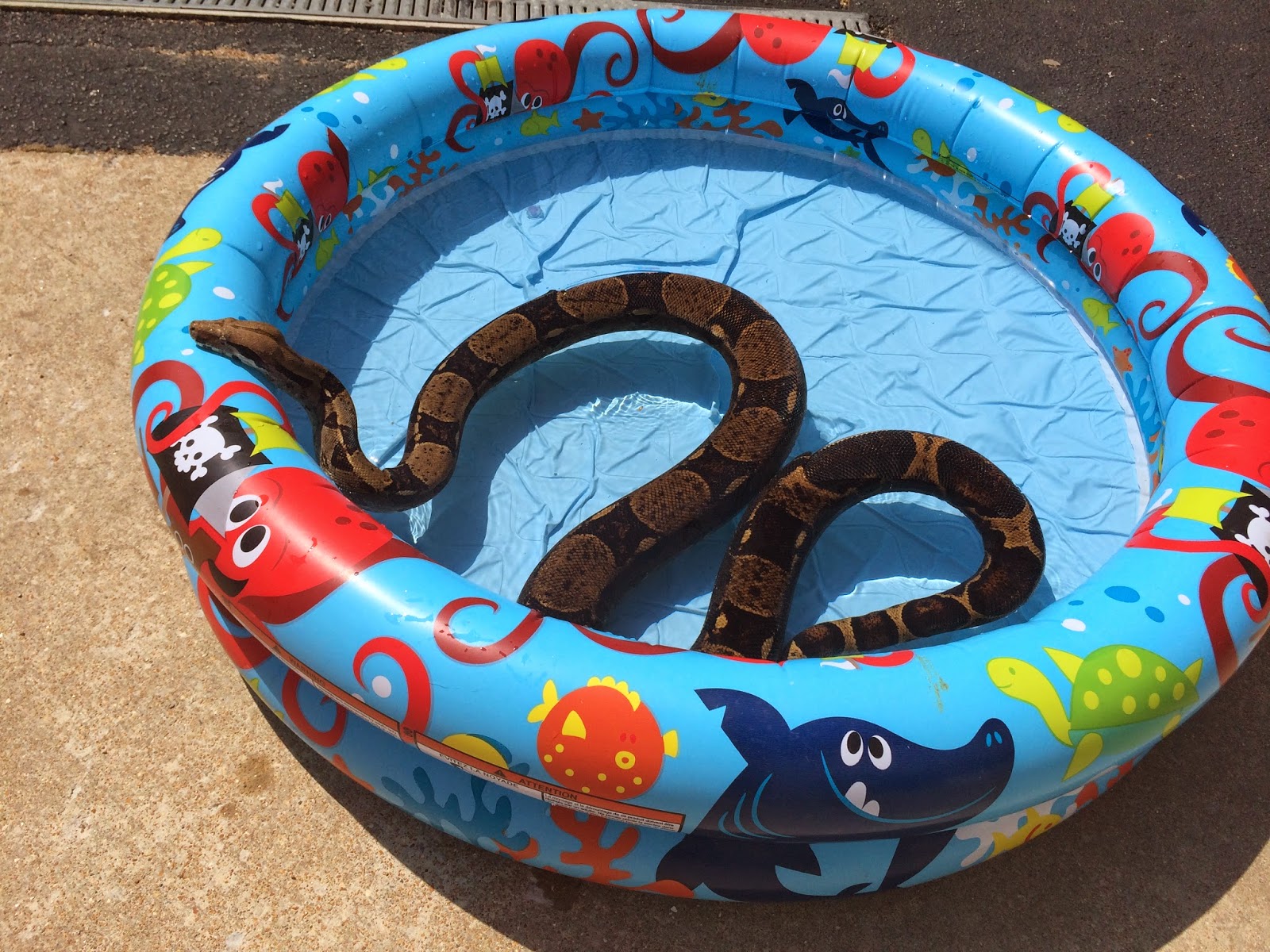Have you ever heard of
Shel Silverstein? Oh, of course
you have. He’s a great
writer! He is best known for his
silly and creative poems for children.
One of my favorites is called Boa Constrictor. The
title of this blog is a line from that poem. I suggest that you check it
out sometime! Now, on to the star
of the article! Meet Slayer, the Colombian Boa Constrictor (Boa constrictor
imperator)!
Slayer, World Bird Sanctuary's resident Boa Constrictor (photo: Lisbeth Hodges)
There are two subspecies
of the Colombian boa constrictor, imperator (Bci) and constrictor (Bcc). The Bci is the more common of the two
subspecies in the pet trade. The
Bcc is extremely rare to be found in captivity, as well as in the wild.
These beautiful snakes are
native to the South American countries of Brazil,
Colombia, Guyana, Peru, Venezuela, and Ecuador, and the Caribbean islands of Trinidad, Tobago, French Guiana, and Suriname. The
habitat in these locations varies from tropical rainforests to arid
semi-deserts. Rainforest areas are
more desirable habitats for these reptiles because
of the humidity and the greater abundance of
varied food.
Boa Constrictors eat
mostly small to medium sized mammals, but will also eat lizards, birds, and
amphibians. Snakes have very slow
metabolisms, and it takes from 4-6 days to digest their
food after ingestion. We
feed Slayer 1-2 large rats once every two weeks.
Boa constrictors have two
lungs, but one is smaller on the left side of the body and the right side is
larger and functional. Most other snakes only have their left lung present.
Just like other snakes,
Boas use their tongue to smell their surroundings. When they stick out their tongue, it catches molecules in
the air and then retracts into the mouth and touches the Jacobson’s organ at
the roof of their mouths. This
tells them what they smell near them, such as food.
When she’s not eating Slayer
lounges around in her exhibit in the World Bird Sanctuary Nature Center, or travels with us to educational programs. From time to time we take her outside
and give her a bath. These snakes
are very capable swimmers and Slayer seems to love
to get in her pool as you can see below.
Slayer enjoying a swim on the amphitheater stage (photo: Lisbeth Hodges)
Female snakes are
generally larger than the males.
Female Colombians range from 6-8 feet and males 5-7 feet. The longest on
record is 10 feet in length!
Boas can live a very long time in captivity. The normal lifespan is 20-30 years. The longest living Boa Constrictor
reached over 40 years! Slayer is
at least 11 years old and we have had her since 2011. We acquired her from a gentleman that could no longer care
for her because of her size. She
is currently about 6 feet in length and weighs around 20lbs.
Boas are ovoviviparous,
meaning that they give birth to live
young. The eggs hatch inside the
body and then the young exit the female.
They can produce 10-65 in a litter! That’s a lot of kids! The females can also store sperm in
their bodies up to one year! Amazing!
Slayer
is available for adoption in our Adoption program. To find out more information, call
636-861-3225. All adoption
donations are tax deductible. This
season she can be seen in the nature center at the World Bird Sanctuary (link)
which is open daily from 8am-5pm.
Slayer is a very beautiful snake.
You should stop on by and visit her!
Submitted by Lisbeth Hodges, World Bird Sanctuary Naturalist






No comments:
Post a Comment